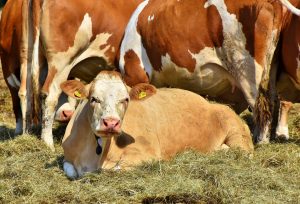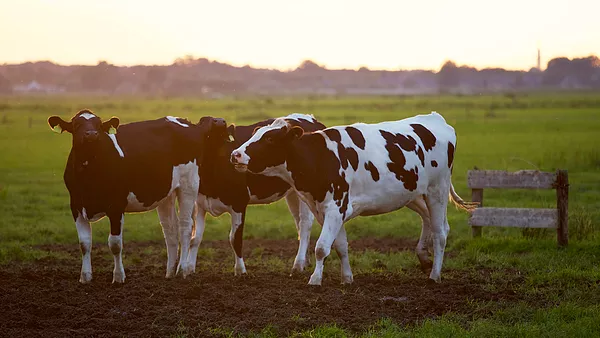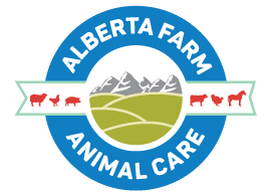Selective dry cow therapy and antimicrobial resistance
Diego Nobrega, Herman Barkema, University of Calgary
 As antimicrobial resistance is a global concern, there is a broad push to reducing antibiotic use. For example, in the dairy sector, selective dry cow therapy (only some cows or quarters are treated at drying off) is being promoted in lieu of traditional blanket dry cow therapy involving treatment of every quarter.
As antimicrobial resistance is a global concern, there is a broad push to reducing antibiotic use. For example, in the dairy sector, selective dry cow therapy (only some cows or quarters are treated at drying off) is being promoted in lieu of traditional blanket dry cow therapy involving treatment of every quarter.
Dr. Diego Nobrega, a Brazilian veterinarian doing his PhD at the University of Calgary with Dr. Herman Barkema, is characterizing antimicrobial resistance in bacteria isolated from milk. A major focus of Barkema’s group as the Industrial Research Chair in Infectious Diseases of Dairy Cattle is to reduce antimicrobial resistance in dairy herds but concurrently to sustain the health and welfare of dairy cows. “The idea is to reduce antibiotic use, but ensuring that they are still used when truly needed” says Diego.
They recently studied associations between antibiotic use and resistance in herds of the Canadian Bovine Mastitis and Milk Quality Research Network. These herds had a wide range in levels of antibiotic use. The goal was to determine whether herds that had a lower use of antibiotics, including herds that used selective dry cow therapy, had less antimicrobial resistance in milk-borne bacteria.

Despite an intuitive notion that reducing antibiotic use will reduce antimicrobial resistance, they determined that the major risk factor for antimicrobial resistance was systemic use of antibiotics (injected into a muscle, under the skin or into a vein). Therefore, antimicrobial resistance was increased by systemic antibiotic thereapy, but not by infusing antibiotics into the udder (for clinical mastitis or dry cow therapy). Dr. Barkema concluded that “It seems antibiotics administered systemically are creating an environment favorable for developing antimicrobial resistance in bacteria present in the milk.”
According to their findings, use of selective dry cow therapy is unlikely to alter the incidence of antimicrobial resistance, although it will reduce antibiotic use. “Irrespective of the lack of associations between intramammary use and resistance, the dairy sector should decrease the use of antibiotics to retain its social license”, says Dr. Herman Barkema.
They also observed that the systemic use of three drug classes, all of high or very high importance for human medicine, was associated with resistance. “Third-generation cephalosporins, macrolides and penicillins are considered critically important antimicrobials for human medicine; two of them are in the highest priority category, according to the World Health Organization” says Dr. Diego Nobrega.
In summary, herds that use selective dry cow therapy used less antibiotics; however, that was not associated with less antimicrobial resistance in bacteria isolated from milk. Further work is needed to improve the use of antibiotics, including ways to limit systemic treatments. Although selective dry cow therapy will reduce total use of antibiotics, rational use of systemic antibiotics is expected to have a greater impact on antimicrobial resistance.
 As antimicrobial resistance is a global concern, there is a broad push to reducing antibiotic use. For example, in the dairy sector, selective dry cow therapy (only some cows or quarters are treated at drying off) is being promoted in lieu of traditional blanket dry cow therapy involving treatment of every quarter.
As antimicrobial resistance is a global concern, there is a broad push to reducing antibiotic use. For example, in the dairy sector, selective dry cow therapy (only some cows or quarters are treated at drying off) is being promoted in lieu of traditional blanket dry cow therapy involving treatment of every quarter.
